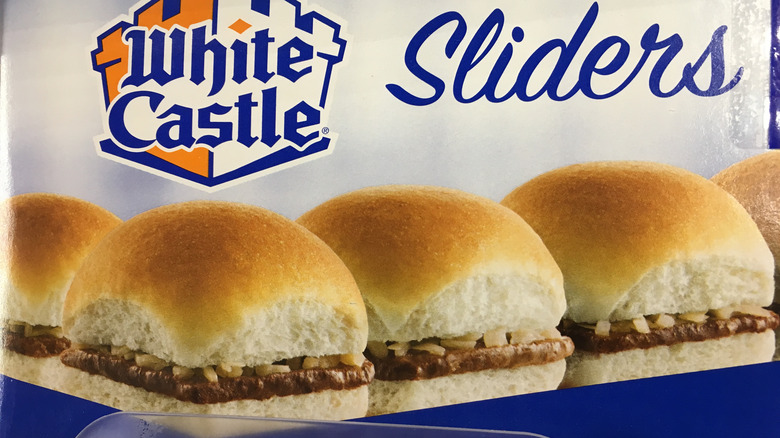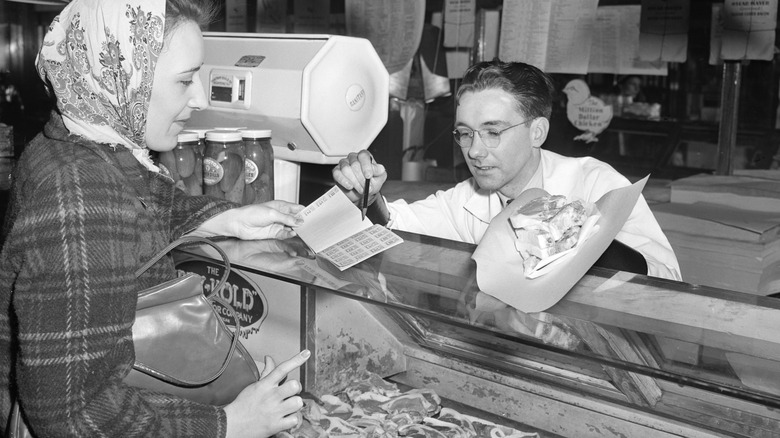During WWII, White Castle Survived A Beef Burger Shortage With Fried Eggs
"Share the meat" and "Do with less so they'll have more" are common slogans found on World War II propaganda posters. The message was clear: Eat less meat and ration your food so soldiers can get their fair share. Due to supply shortages, starting in 1942, Americans received ration cards that limited the amount of goods they could buy such as tires, shoes, butter, sugar, coffee, dairy, jams, jellies, shortening, and oils. Restaurants were also forced to ration meat due to food shortages, with many enforcing a meatless day of the week (i.e., "meatless Mondays").
Established in 1921, White Castle was a popular burger chain during this time that wasn't above the rationing policies set forth by the Office of Price Administration (OPA) under President Roosevelt. They too were experiencing the effects of the war on the availability of goods, forcing them to get creative with their menu options.
We all know White Castle for its infamous square patty hamburgers. The idea of ordering a fried egg sandwich from such a renowned hamburger eatery seems out of place (although they do currently have them on their breakfast menu). Yet during WWII, as a creative workaround for the meat shortage, White Castle added additional items like egg sandwiches, grilled cheese, baked beans, and french fries to their menu.
Food shortages led to rationing and other proteins on the menu
During World War II, America's meat supply and other goods were largely being diverted to troops overseas, causing a shortage for citizens and businesses alike. While restaurants received a greater allotment of ration coupons than individual citizens, they still had to follow strict rationing policies; For instance, they were required by the OPA to document the number of meals they served and to maintain specific price lists that had to be filed with their local War Price and Rationing Board.
Just as housewives were asked to use proteins besides meat in their cooking (like eggs, peanut butter, soy products, beans, and cheese), restaurants like White Castle were able to hold on through the war by adding other proteins and food items to their menus. The fried egg sandwiches (served after midnight) and other non-hamburger food items were actually quite popular with White Castle's devoted customers. Ultimately, however, the food shortages caused by the war led many White Castle restaurants to close due to profit losses and the remaining ones to raise their hamburger price from a nickel to a dime.

